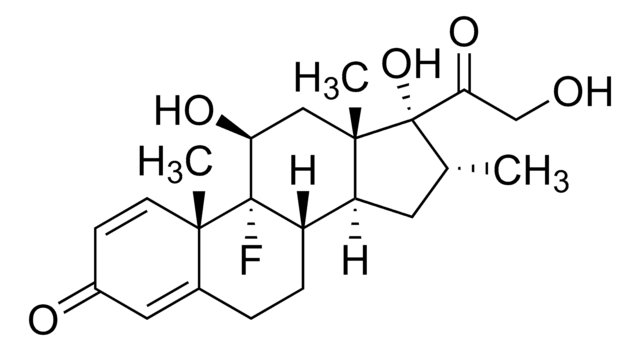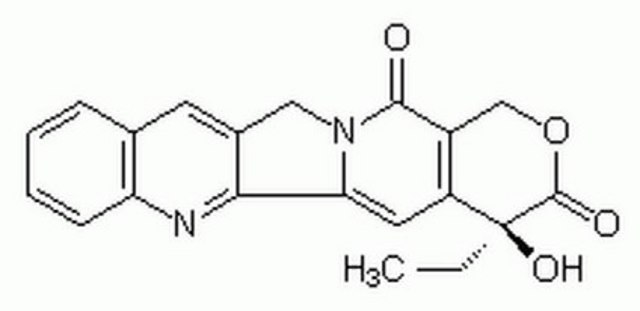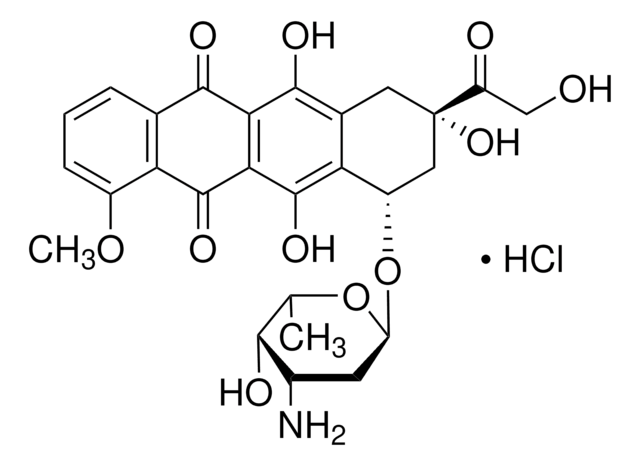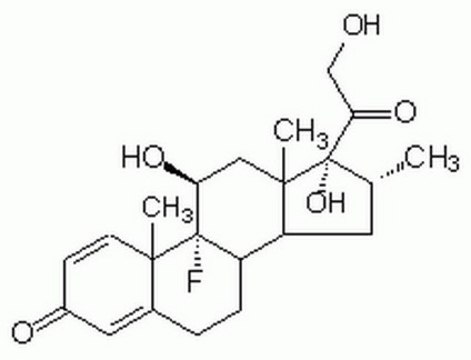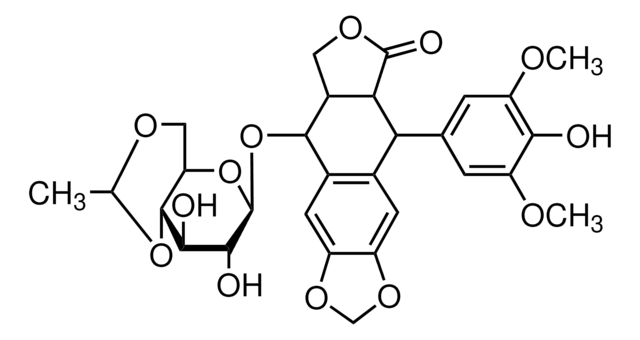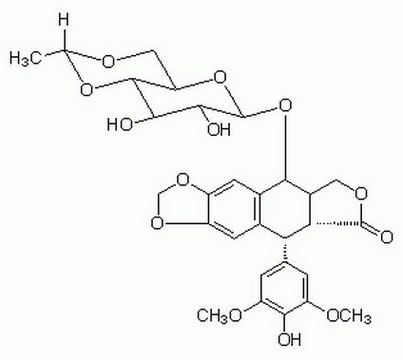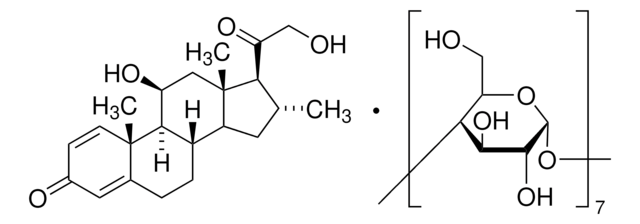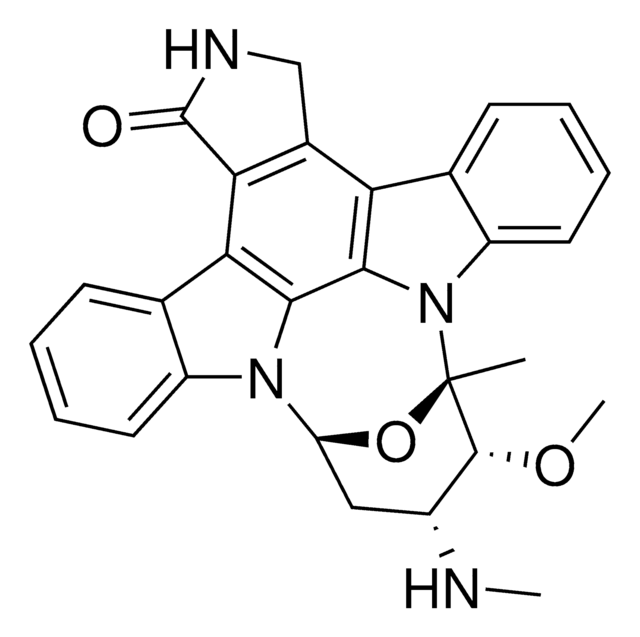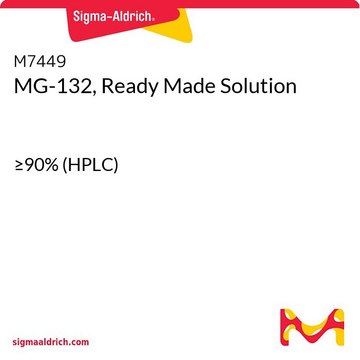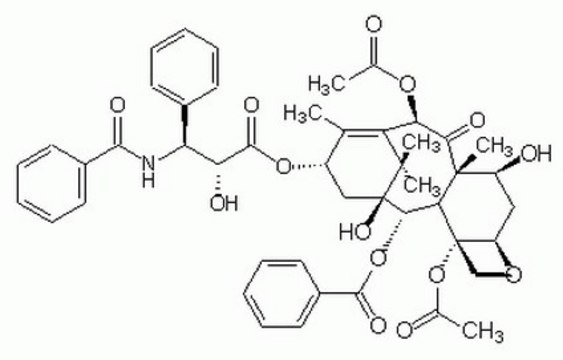APT800
Apoptosis Inducer Set
Apoptosis Inducer Set contains Actinomycin D, Camptothecin, Cycloheximide, Dexamethasone & Etoposide. These compounds can be used for inducing apoptotic activity in many cell culture systems.
Synonym(s):
5 Apotosis Inducers
Sign Into View Organizational & Contract Pricing
All Photos(1)
About This Item
UNSPSC Code:
12161503
eCl@ss:
32161000
NACRES:
NA.32
Recommended Products
Quality Level
form
liquid
species reactivity (predicted by homology)
mammals
manufacturer/tradename
Chemicon®
technique(s)
activity assay: suitable
shipped in
dry ice
General description
Actinomycin D: Classical anti-neoplastic drug. Cytotoxic inducer of apoptosis against tumor cells. A DNA dependent inhibitor of RNA synthesis, actinomycin promotes induction of apoptosis by some specific stimuli, for example, TRAIL and Fas (CD95). Actinomycin D can also alleviate or block the apoptotic process and decrease the cytotoxicity induced by several stimuli such as the dihydrofolate reductase inhibitor aminopterin and the prostaglandin derivative 15-deoxy-D12,14-prostaglandin J2, thus it can have both pro and ant-apoptotic activities in some systems.
Camptothecin: Powerful anti-tumor agent. Camptoethecin is an inhibitor of DNA-topoisomerase I. The drug activates the p53 resulting in upregulated expression of TRAIL-R2 (DR5) and Bak to overcome TRAIL resistance in Bax-deficient human colon carcinoma cancer cells. In addition, Camptoethecin induced apoptosis can be increased by the presence of cytokines such as TNF via its subsequent inhibition of NFkappa B {Valente P et al Eur J Cancer (2003) 39:1468-77}.
Cycloheximide: A potent protein translation inhibitor which results in the inhibition of protein synthesis and subsequent arrest of cell growth and induction of cell death. Cycloheximide also facilitates apoptosis induction via FasL, however, cycloheximide can also prevent apoptosis in some systems, such as thalassemic serum induction of HUVEC cells {Banjerdpong, R. (1998) Ph.D Thesis Mahidol Univ. Bangkok, Thailand}.
Dexamethasone: Classic inducer of apoptosis in thymocytes; a glucocorticoid anti-inflammatory agent. Regulates T cell survival, growth and differientiation; modulator of nitric oxide synthase. Induces apoptosis in thymocytes as well as other immune cells like microglia. However, like other apoptotic inducers, dexamethasone can suppress apoptosis in certain systems through the activation of anti-apoptotic proteins such as bcl-X {Chang, et al (1997) FEBS Letter 415:11-15}.
Etoposide: Potent topoisomerase II inhibitor. An anti-tumor agent that enhances dsDNA & ssDNA cleavage and inhibits DNA religation. Inhibits the cell cycle in the S-phase and induces apoptosis in normal and tumor cell lines, but can be modulated by intracellular levels of cAMP and other factors {Bermejo, L et al (1998) J. Cell Sci 111:637-644;Solovyyan, V et al. (1998) Brain Res Mol Brain Res 62:43-55}
Camptothecin: Powerful anti-tumor agent. Camptoethecin is an inhibitor of DNA-topoisomerase I. The drug activates the p53 resulting in upregulated expression of TRAIL-R2 (DR5) and Bak to overcome TRAIL resistance in Bax-deficient human colon carcinoma cancer cells. In addition, Camptoethecin induced apoptosis can be increased by the presence of cytokines such as TNF via its subsequent inhibition of NFkappa B {Valente P et al Eur J Cancer (2003) 39:1468-77}.
Cycloheximide: A potent protein translation inhibitor which results in the inhibition of protein synthesis and subsequent arrest of cell growth and induction of cell death. Cycloheximide also facilitates apoptosis induction via FasL, however, cycloheximide can also prevent apoptosis in some systems, such as thalassemic serum induction of HUVEC cells {Banjerdpong, R. (1998) Ph.D Thesis Mahidol Univ. Bangkok, Thailand}.
Dexamethasone: Classic inducer of apoptosis in thymocytes; a glucocorticoid anti-inflammatory agent. Regulates T cell survival, growth and differientiation; modulator of nitric oxide synthase. Induces apoptosis in thymocytes as well as other immune cells like microglia. However, like other apoptotic inducers, dexamethasone can suppress apoptosis in certain systems through the activation of anti-apoptotic proteins such as bcl-X {Chang, et al (1997) FEBS Letter 415:11-15}.
Etoposide: Potent topoisomerase II inhibitor. An anti-tumor agent that enhances dsDNA & ssDNA cleavage and inhibits DNA religation. Inhibits the cell cycle in the S-phase and induces apoptosis in normal and tumor cell lines, but can be modulated by intracellular levels of cAMP and other factors {Bermejo, L et al (1998) J. Cell Sci 111:637-644;Solovyyan, V et al. (1998) Brain Res Mol Brain Res 62:43-55}
Application
It is recommended to use 1000X dilutions of the supplied stocks as a starting point for inducing apoptotic activity in many cell culture systems (e.g., Add 1 μL to 1 mL culture medium), however, the optimal doses may vary for different cell and culture conditions. For small volumes diluting the stocks 1:10 into fresh DMSO, then diluting the material further 1:100 into the culture media or PBS can facilitate the addition of the inhibitor to small volumes of less than 1 mL.
Research Category
Apoptosis & Cancer
Apoptosis & Cancer
Components
· Actinomycin D (10 mM): 50 μL
· Camptothecin (2 mM): 1 mL
· Cycloheximide (100 mM): 1 mL
· Dexamethasone (10 mM): 1 mL
· Etoposide (10 mM): 100 μL
· Camptothecin (2 mM): 1 mL
· Cycloheximide (100 mM): 1 mL
· Dexamethasone (10 mM): 1 mL
· Etoposide (10 mM): 100 μL
Physical form
Liquid in DMSO containing no preservatives.
Storage and Stability
Store kit materials at -20°C for up to their expiration date. Avoid repeated freeze/thaw cycles. Protect product tubes from light.
WARNING: Kit contains highly toxic agents; professional users only; wear gloves and other protective equipment and good laboratory practices when manipulating the concentrated and diluted solutions.
WARNING: Kit contains highly toxic agents; professional users only; wear gloves and other protective equipment and good laboratory practices when manipulating the concentrated and diluted solutions.
Legal Information
CHEMICON is a registered trademark of Merck KGaA, Darmstadt, Germany
Disclaimer
Unless otherwise stated in our catalog or other company documentation accompanying the product(s), our products are intended for research use only and are not to be used for any other purpose, which includes but is not limited to, unauthorized commercial uses, in vitro diagnostic uses, ex vivo or in vivo therapeutic uses or any type of consumption or application to humans or animals.
Signal Word
Danger
Hazard Statements
Precautionary Statements
Hazard Classifications
Acute Tox. 3 Oral - Aquatic Chronic 3 - Carc. 1B - Muta. 1B - Repr. 1B
Storage Class Code
6.1C - Combustible acute toxic Cat.3 / toxic compounds or compounds which causing chronic effects
Flash Point(F)
188.6 °F
Flash Point(C)
87 °C
Certificates of Analysis (COA)
Search for Certificates of Analysis (COA) by entering the products Lot/Batch Number. Lot and Batch Numbers can be found on a product’s label following the words ‘Lot’ or ‘Batch’.
Already Own This Product?
Find documentation for the products that you have recently purchased in the Document Library.
Jason Pellettieri et al.
Developmental biology, 338(1), 76-85 (2009-09-22)
Many long-lived organisms, including humans, can regenerate some adult tissues lost to physical injury or disease. Much of the previous research on mechanisms of regeneration has focused on adult stem cells, which give rise to new tissue necessary for the
Our team of scientists has experience in all areas of research including Life Science, Material Science, Chemical Synthesis, Chromatography, Analytical and many others.
Contact Technical Service